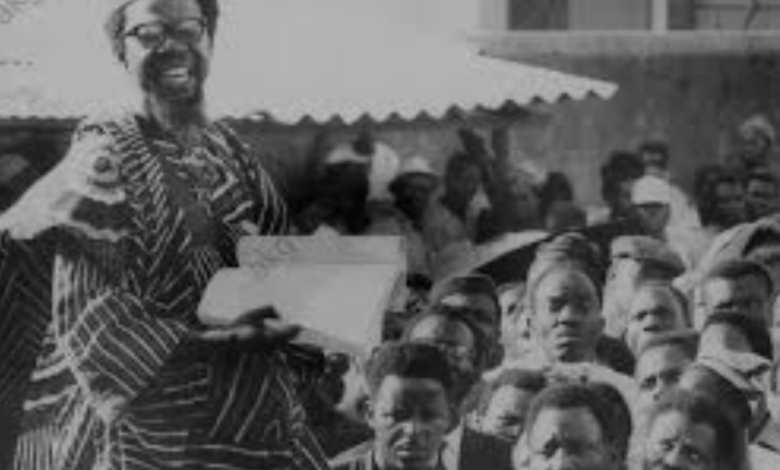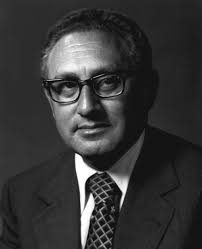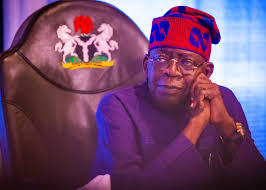
By Baba Aye
On 21 September 1974, trade union leaders in Nigeria issued the Apena Declaration, where they committed themselves to working for working-class and trade union unity.
The declaration derived its name from the place where it was signed. It was at the Apena cemetery in Ebute Metta, Lagos, where trade union leaders from all four trade union centres had come to bury Chief J.A. Oduleye, treasurer of the United Labour Congress of Nigeria.
This was the point of departure for overcoming the long history of organisational division within the movement and laid the basis for forming the Nigeria Labour Congress, which the Nigerian state tried to scuttle by hook or crook.
Before the Apena Declaration
During the 1930s, the number of trade unions in Nigeria expanded from just a handful to dozens. This was partly because of the impact of the Great Depression on the working class. They combined to fight for better wages and dignity in different sectors. By the early 1940s, the trade unions came together to form the first trade union centre in the country. They named it the Trade Union Congress (of Nigeria) at its first conference in 1943. This was also the period of renewed anti-colonial resistance. The National Council of Nigeria and the Cameroons (NCNC) was formed the following year. Workers’ power was crucial to the middle-class nationalists. The TUC leadership became involved in the leadership of the NCNC from its onset in 1944. But the leaders of some of the big affiliates of the federation did not welcome this, and differences over what the orientation of the TUC should be to the NCNC would eventually lead to the demise of that first trade union federation of Nigerian workers.
Differences between leaders on partisan engagement in the anti-colonial struggle could not dampen the massive growth of workers’ power. In 1945, the workers took the initiative to organise the first General Strike in Nigeria. It was a glorious chapter of struggle. To press home their demands for a cost-of-living allowance (COLA) to ameliorate their poor wages and working conditions, they stopped work for over fifty days. And they won!
The nationalists started singing the praises of workers’ leaders, wanting to leverage on the power of our class to their own benefit, claiming that we all stood to benefit from the struggle to kick out the colonialists. But just some years later, when it became clear that the British colonial state would hand over power to them, they abandoned the working class to its fate. And eventually, after independence, they also continued exploiting us just as the colonial capitalists did.
But all that is a story for another day. We will go back now to explain why this history is important for today’s generation of the working class to understand the importance of the Apena Declaration. The Trade Union Congress split at its December 1948 Conference. This was the first split of many in the history of the Nigerian trade union movement. And it was over the continued affiliation of the TUC with the NCNC, as we pointed out earlier.
A section of the trade unions’ bureaucracy argued that the TUC had never formally passed a resolution to affiliate to the NCNC, and they called for a vote on the matter. They won the vote. Those who were for continued affiliation walked out of the Conference and went ahead to form the Nigerian National Federation of Labour (NNFL). There were several attempts to reinstate unity of the movement after this, even as the bases of continued splits changed. But the successes of each of these were at best temporary until the Apena Declaration.
The first of these efforts led to the formation of the first Nigeria Labour Congress (NLC) in May 1950. But that NLC withered away within a year. Efforts to get a unified centre back on track led to the formation of the All-Nigeria Trade Union Federation (ANTUF) in 1953, which lasted for four years before yet another split.
By the late 1950s, the locus of division had changed. It was then along the lines of ideological orientation to either the World Federation of Trade Unions, with ties to the Soviet Union or the International Confederation of Trade Unions which was aligned with the capitalist West. In the immediate aftermath of Independence, the native capitalists that had come to power wanted the trade unions united for the purpose of incorporating them into a “patriotic” cross-class agenda. Jaja Wachukwu, the Speaker of the first House of Representatives, summoned a conference at Trenchard Hall University of Ibadan (UI) for this purpose, poised to unite the two currents into a United Labour Congress of Nigeria.
This was not a successful venture. The newly formed ULCN voted to affiliate to the ICFTU, reflecting the slight but significant numerical superiority of the social democratic current in the movement. The Marxist-Leninist current immediately pulled out to reconstitute the NTUC. There were frictions within each of the two centres, which led to the formation of two more centres.
In the ranks of the ULCN, a split had occurred over the delegate list of the centre to the 1962 International Labour Conference. Some of those who felt that they had been left out formed a new federation; the Nigeria Workers Council, which claimed to be neither to the left or to the right of the ideological divide. It later affiliated to the World Confederation of Labour, which had close ties with the Church. Meanwhile, by 1963, the young Marxist Turks in the NTUC, led by Wahab Goodluck, took over the leadership. The old guard of Michael Imoudu and Gogo Chu Nzeribe, whom they had taken power from left to form the Labour Unity Front.
The trade union movement experienced division along the lines of these four federations for a decade. But, they united to fight where and when this was of utmost importance for the working class. The first time was in 1964, when they formed the Joint Action Committee to fight for the release of the White Paper of the Morgan Commission. This JAC led the second nationwide general strike in the history of Nigeria and the first after independence. The second time was in the early 1970s when they formed the United Committee of Central Labour Organisations (UCCLO) over the Adebo Commission.
This was the situation when J.A. Oduleye died in 1974. He was the treasurer of ULCN. Incidentally, his brother was also General Secretary of the NWC. Anyway, when he was buried at Apena cemetery on 21 September 1973, leaders from all the centres came to pay their last respects. It was there that Okon Eshiett, who was head of the Trade Union Institute of the ULCN, penned that historic call for unity of the movement, which was unanimously endorsed.
From Apena Cemetary to the birth of the third NLC
The leaders of the four federations agreed to the call. Towards implementing this decision, each of the federation held a delegates conference where they voted, in line with provisions of the Trade Union Act (1973) to dissolve into and form a new trade union centre. There was a consensus on what the new centre would be called. This was the Nigeria Labour Congress. That was based on the recognition of the 1950 NLC as the first effort to unite a fractured organisation of the trade union movement in the country. A number of other important decisions were reached. A 50-person Steering Committee was constituted,which was to steer the process towards the founding congress of the new NLC that was scheduled for December 1975.
There were intense consultations, facilitated by the Steering Committee. And one of the resolutions that came out of these was to have as inclusive a National Executive Committee as possible, covering leaders from all the four centres. Towards this, a meeting held at Agege arrived at a list of over 100 trade union leaders to make up the NEC, with Wahab Goodluck as President. This agreement was known as the Agege Deal.
Unfortunately, despite the large size of the proposed NEC, there were still a number of trade union leaders, from the different centres, who felt they should have been on the list but were not added. They rejected the “Agege Deal” as an autocratic scheme and declared themselves to be “democrats.” They did everything possible to upturn the Agege Deal, to no avail. As the 18-19 December 1975 founding conference of the second NLC drew closer, they courted the federal government’s intervention claiming that most of the trade union leaders on the proposed NEC list were corrupt.
The Federal Military Government, on its part, had been bothered by the independent efforts of the trade union centres to unify into one body. They realised that this could deepen working-class power to challenge the military government and, indeed, the capitalist class. So, they had been thinking of how to nip the unification process in the bud. The complaint of the so-called democrats provided them with an opportunity.
On 4 December 1975, just two weeks before the opening conference of the 2nd NLC which the Steering Committee had invited him to join, General Henry Adefowope, the federal commissioner for labour in the military junta issued the government’s “new directive on labour.” This was to be based on “guided democracy” and “limited intervention” in the labour movement.
The junta tried to scuttle the Conference from taking place. Several delegates could not get to the venue, they suffered harassment of different sorts. But eventually people still turned up at the venue on 18 December, which was scheduled to be Day 1 of the Conference. Seeing this, Adefowope came to the opening session only to inform delegates that the NLC that they were forming there and then was being banned by the government. And he added that the military government would restructure the trade union movement.
A few months later, the junta set up a tribunal to investigate the activities of the former four trade union centres and their leaders. Justice Duro Adebiyi led this tribunal. It found eleven leading trade unionists from each of the four centres, who were all on the Agege Deal NEC, guilty and banned them for life from ever taking part in trade union activities. Furthermore, the military junta conducted another kangaroo process to try Wahab Goodluck, the second NLC’s President, and two of his close comrades for actively participating in the Socialist Workers and Farmers Party (SWAFP), following the prohibition of partisan politics in the mid 1960s.
However, the Nigerian state clearly recognized that a structural unity of the trade union movement was an inevitable reality that could not be denied. So, it decided to shape that process on its own terms. It was not as successful as it intended.
The over 1,000 trade unions operating at the time were streamlined into 41 “industrial unions” and 24 “senior staff associations.” And a new NLC was constituted as the “central labour organisation” with the “industrial unions” as its affiliates. The senior staff associations were constituted into a senior staff consultative assembly of Nigeria (SESCAN).
The inaugural conference of the third NLC was held at Ibadan on 28 February. The military junta’s scheming to determine the leadership that would emerge there failed woefully. Hassan Summonu, a protege of Wahab Goodluck from the former NTUC was voted president.
Conclusion
It has been a long journey since the Apena Declaration. There have been terse moments of the NLC’s fracture, right from its early days, through to the 21st century. But it has managed to rise from these, more united.
The National Party of Nigeria government sowed the earliest schisms in the Second Republic. They promoted a Committee for Democratic Trade Unions (CDTU) as a counterforce to the left leadership of the NLC in the early 1980s. It came close to being registered after it lost to the left line-up with Hassan Summonu as president for a second term in 1981. But the NLC foiled efforts in this direction.
The military government of General Ibrahim Babangida went a step further. It supported what was left of the CDTU to conduct a parallel delegates conference in 1988. It then used the contrived excuse of there being factions to proscribe NLC! His intention then was to make sure the NLC was not available to mobilise mass resistance to what would become a centrepiece of neoliberal policies till date; sharp increases in fuel pump price. However, this stratagem failed. Rank-and-file workers took to the streets with students, forcing individual unions to support the actions that workers were taking from below already in what was a massive wave of resistance to the May 1988 fuel pump price hike.
At the beginning of the 21st century, this dance of fuel price increase and mass resistance took on a more regular dimension and equally more trenchant dynamics. A sharp increment in June 2000 led to an instantaneous wave of mass strikes and protests which peaked with a general strike. In 2003 and 2004, there were increasingly powerful repeat performances, leading President Olusegun Obasanjo to accuse the NLC of constituting itself into a parallel power to the state. To undermine this power, it passed the Trade Union (Amendment) Act 2005, which stripped the NLC of its privileged position of being the sole recognised central labour organisation.
The government granted registration to the Trade Union Congress as a central labour organisation. This was the former SESCAN that had been formally denied such status by the military government under General Olusegun Obasanjo. But instead of becoming merely rivals, as the government envisaged, the collaboration of the two centres deepened.
There have also been short-lived divisions from within the movement. In 2003, some affiliates of the TUC broke away to form the Congress of Free Trade Unions (CFTU). That was because TUC pulled out of the general strike it had commenced with NLC to force a reduction of the fuel pump price. Most affiliates of CFTU eventually decided to join the NLC. And in 2015, an NLC faction emerged in the wake of a rancorous 13th National Delegates Conference. This faction later became the United Labour Congress. But in 2020, it reconciled with the NLC.
The history of the trade union movement over the last five decades is one of organisational resilience. But even more importantly, it is one of workers’ power. Strong trade union organisation underscores institutional power. This is good. But workers’ power is much more than that. The Apena Declaration meant much more than the formal organisational unity of The trade union centres to the rank-and-file workers fifty years ago. It’s spirit means much more than that to today’s generation of workers.
To borrow from Ralph Chaplin’s great song, Solidarity Forever,
In our hands is placed a power greater than their hoarded gold,
Greater than the might of armies, multiplied a thousand-fold.
We can bring to birth a new world from the ashes of the old
For the union makes us strong.
Holding that power dearly and fighting with it to end wage slavery is the greatest inspiration we must draw from the spirit of the Apena Declaration, for workers’ struggles today, and till we win; we have nothing to lose but our chains, and a world to gain!




